Demystify headsets by reading this guide. What things you need to measure before ordering. How to tell an integrated headset from a regular headset and everything else you need to know.
There’s no getting away from it, choosing a headset can be confusing. Loads of different standards. Loads of different names for the same thing.
Thankfully the headset companies have talked to each other and come up with a system for identifying headsets: S.H.I.S. This stands for Standard headset Information System.
Using this system is unavoidably a bit complicated but it does result in you getting the correct headset for your bike.
1. Identify if your headset is Press Fit or Integrated
Press Fit headsets have headset bearing cups sitting between the frame and the bearing. With integrated headsets the bearings sit directly in the frame with nothing between. An Integrated headset is just a pair of bearings and a star fangled nut and top cap. No cups.
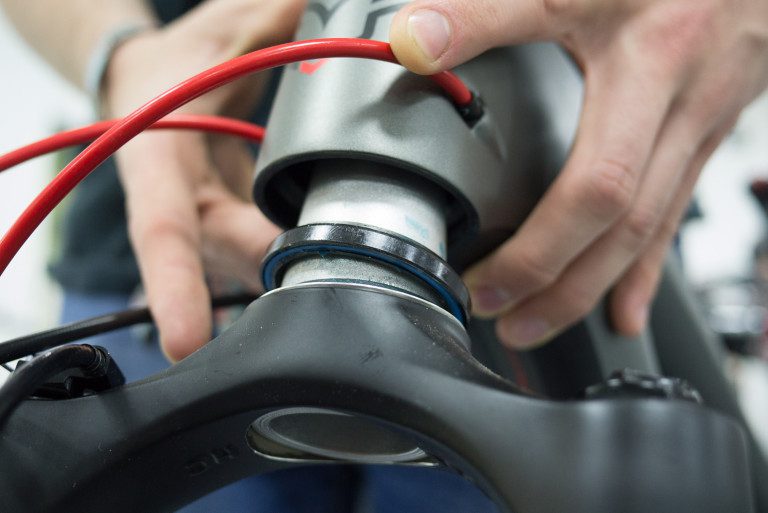
The photo above shows an Integrated headset lower. S.H.I.S. calls Integrated headsets ‘IS’.
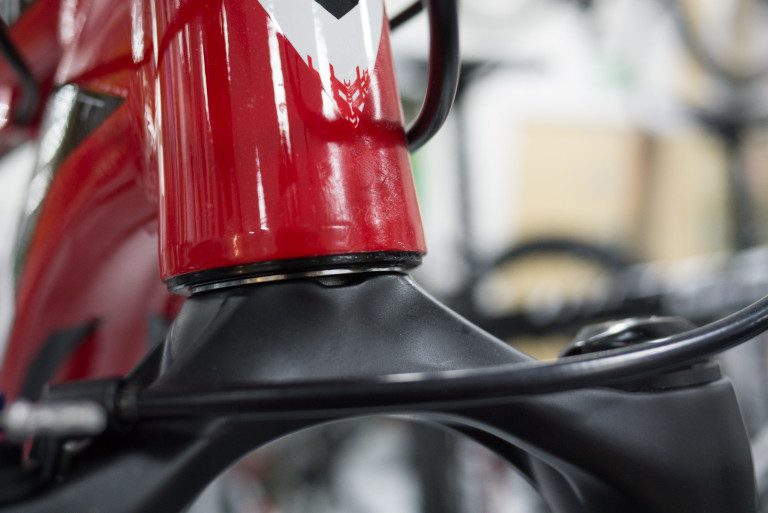
If you can see a headset cup outside of your frame, even just a flange or lip (as in the photo above) then your headset is Press Fit. If you can’t see a headset ie. it’s entirely sitting inside the frame head tube, then your headset is Integrated.
Zero Stack, Conventional, External Cup, Low Profile, Integrated With Cups, Internal, Semi-Integrated, Non-Integrated – ALL of these are Press Fit headsets.

The above pic is a headset with upper and lower External Cups. Another name for External Cup headset type is ‘Conventional’.
S.H.I.S. just splits Press Fit headsets into two types: External Cup (‘EC’) and Zero Stack (‘ZS’). External Cup is where the bearings sits outside of the frame. Zero Stack is where the bearing sits inside the frame.
Headsets can be one type for the upper and another type for the lower(!) It is possible, for example, to have a ZS upper and an EC lower (as in the photo below).
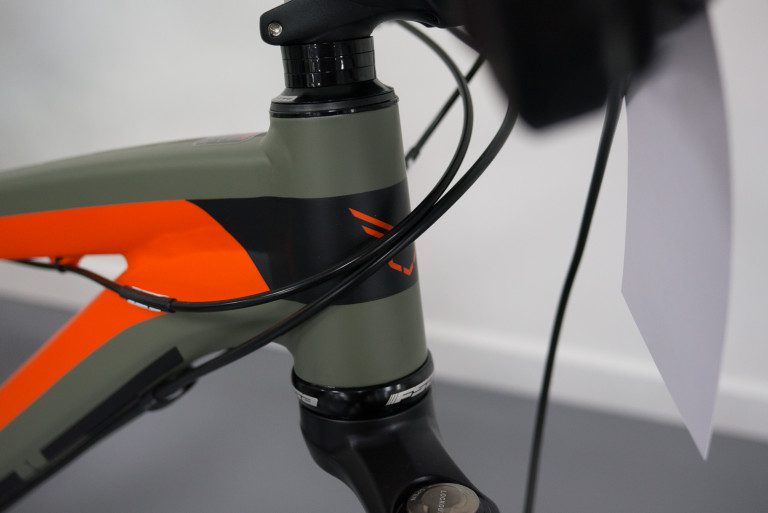
2. Measure the inside diameter of your frame’s head tube
To do this you will have to remove your existing headset from your frame. There are specific tools available for this task but you can use a wide flat blade screwdriver and a hammer if you’re very careful – work around the head tube a bit at a time.
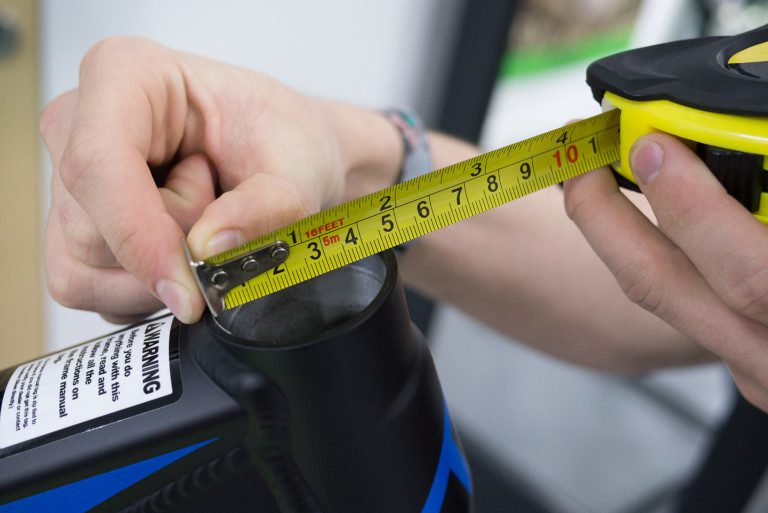
You will need to measure (in millimetres) the inside diameter (ID) of the top of the head tube (above pic) and the bottom of the head tube (pic below). Measurements are rounded to the nearest millimetre.
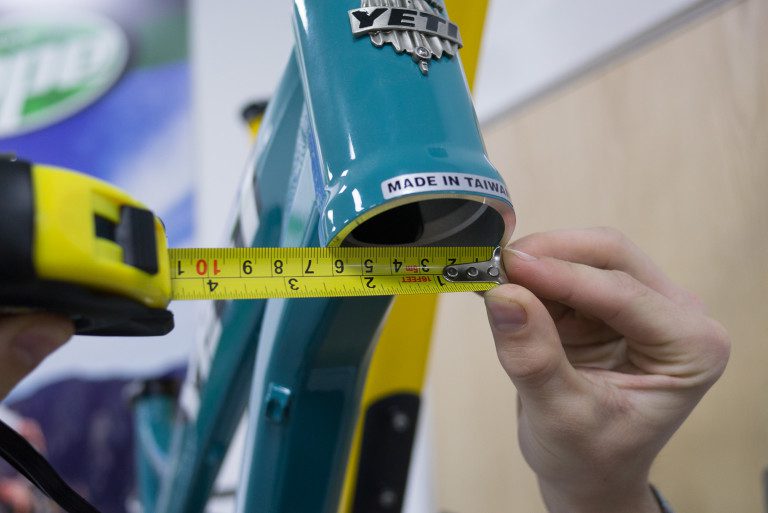
Example: a tapered frame with a 44mm upper ID and a 56mm lower ID.
3. Measure your fork steerer tube
You need to measure it in two places.
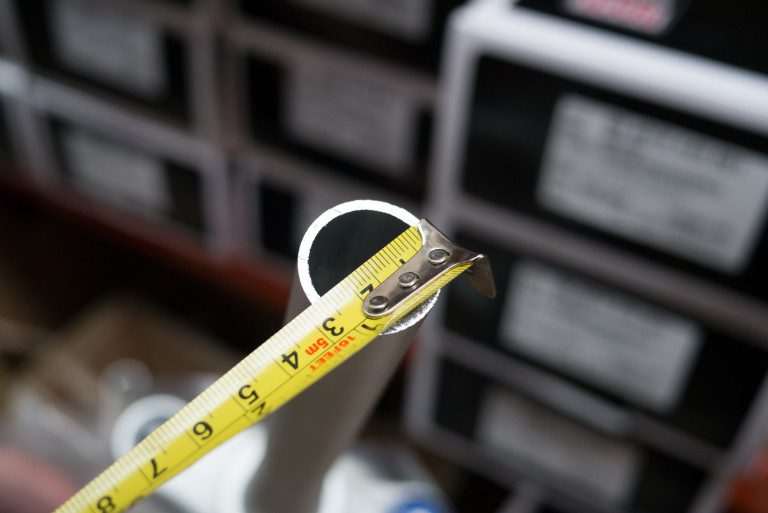
The outside diameter (OD) of the top section (where the stem clamps around, as in the above pic) and the outside diameter of the very bottom bit where the steerer goes into the fork crown (where the headset crown race sits, as in the pic below).
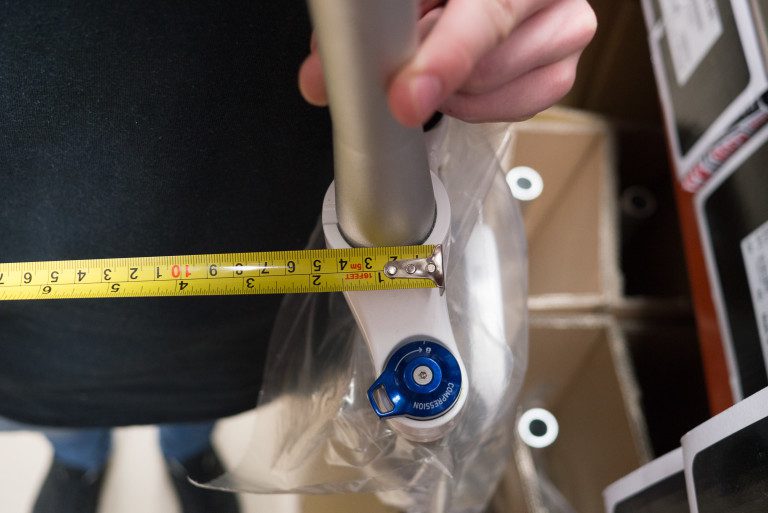
On integrated forks you can measure the angle of the built-in crown race. It will almost certainly be 45 degrees but obsolete 36 degree designs do appear on old frames.
NB: 45 degree headsets may have “36” written in their descriptions (ie. 45 x 45/36) but just ignore that. If it says “45” anywhere in the description it’s a 45 degree headset.
Example: an 1 1/8th steerer fork with a 28.6mm top OD and a 40mm bottom OD.
4. Write down your headset’s full stats
You should have six notes in total, three for each ‘half’ of the headset.
- Upper headset type
- Upper frame internal diameter
- Fork steerer top outside diameter
- Lower headset type
- Lower frame internal diameter
- Fork steerer bottom outside diameter
So for a frame with…
- Press fit Zero Stack upper headset
- 44mm internal diameter head tube top
- 28.6mm fork steerer top outside diameter
- Press fit External Cup lower headset
- 49mm internal diameter head tube bottom
- 40mm fork steerer bottom outside diameter
Your S.H.I.S. numbers are ZS44/28.6 for the upper headset half and EC49/40 for the lower headset half.
Use these numbers when researching and browsing for a new headset and you’ll be certain to end up with the correct headset for your bike.
Below is an informative picture from Hope Technology that covers pretty much all the relevant dimensions (click pic for the full size version).
Still confused?
Leave a comment in the section below and we’ll do our best to help you out.

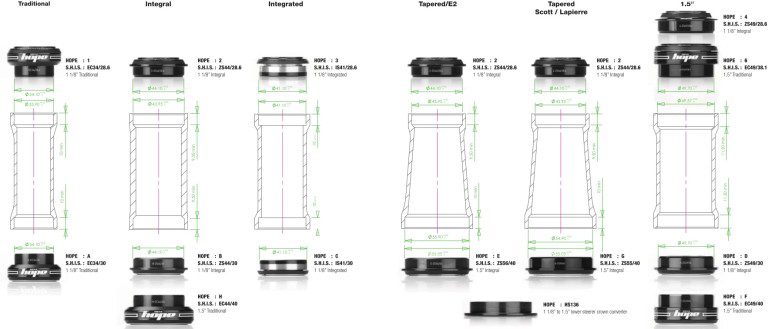
Hello there, just became alert to your blog through
Google, and found that it’s truly informative. I’m going to
watch out for brussels. I’ll appreciate if you continue this in future.
Many people will be benefited from your writing. Cheers!
Hi, of course this post is really nice and I have learned
lot of things from it on the topic of blogging.
thanks.
Hi there everyone, it’s my first visit at this site, and
paragraph is in fact fruitful for me, keep up posting these articles.
I’m looking for a derailleur mount that mounts into a rounded end plate that mounts to the back side of the frame pole. Not the side, nor that would wrap around the frame pole. all derailers I’m finding have mounts on side or that circle the pole. The metal has striped. That the screw does not hold a same angle as when put in. It turns in the mount. I tried ordering a different derailleur but was sent something that mounts around the pole. so I tried to remove the derailer and put on the other mount when I found the mount that attaches the derailleur to the mounting bracket is stripped.
Hi Alan,
If you can drop us an email to sales@merlincycles.com perhaps with some pictures we can take a look for you.
Thanks
Hi guys.
I am trying to fit a RockShox 35 Silver to a Nukeproof Scout XL but the crown end of the steerer tube is too wide to fit into the head tube.
Hi Nick,
Sounds like either;
The headtube of the frame is a standard 1 1/8th and you have a tapered steerer on the fork – in which case, the fork will not fit.
Or
The steerer tube of your current fork is a 1 1/8th and your headset currently has a reducer to match this.
I’d double check the specs of the frame, current headset and fork for compatibility.
Feel free to reach out via email to us.